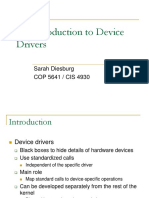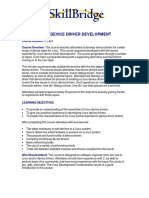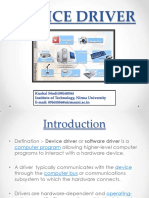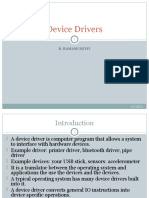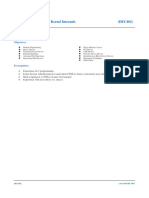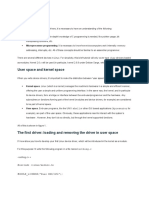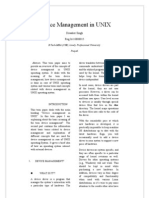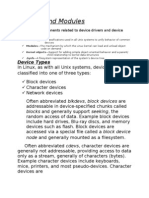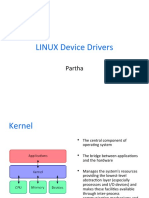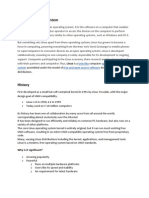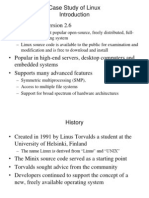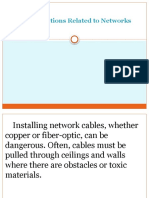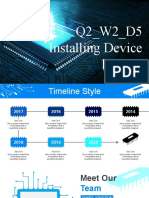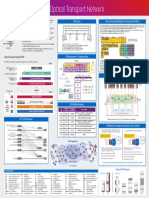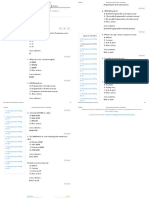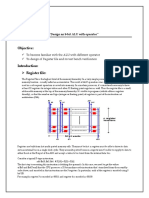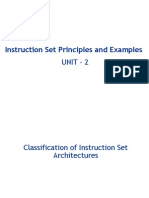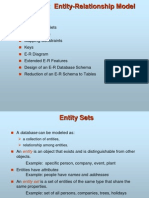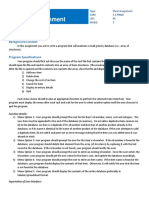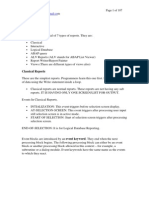0% found this document useful (0 votes)
76 views23 pagesLecture 1 Introduction
This document provides an introduction to device drivers and how they interface with the Linux kernel. It discusses how device drivers map standard kernel calls to hardware-specific operations, and how the kernel's modular design allows drivers to be loaded and unloaded dynamically. It also covers different classes of devices like character, block, and network devices. Security considerations for drivers are outlined.
Uploaded by
Randy GarayCopyright
© © All Rights Reserved
We take content rights seriously. If you suspect this is your content, claim it here.
Available Formats
Download as PPT, PDF, TXT or read online on Scribd
0% found this document useful (0 votes)
76 views23 pagesLecture 1 Introduction
This document provides an introduction to device drivers and how they interface with the Linux kernel. It discusses how device drivers map standard kernel calls to hardware-specific operations, and how the kernel's modular design allows drivers to be loaded and unloaded dynamically. It also covers different classes of devices like character, block, and network devices. Security considerations for drivers are outlined.
Uploaded by
Randy GarayCopyright
© © All Rights Reserved
We take content rights seriously. If you suspect this is your content, claim it here.
Available Formats
Download as PPT, PDF, TXT or read online on Scribd
/ 23
